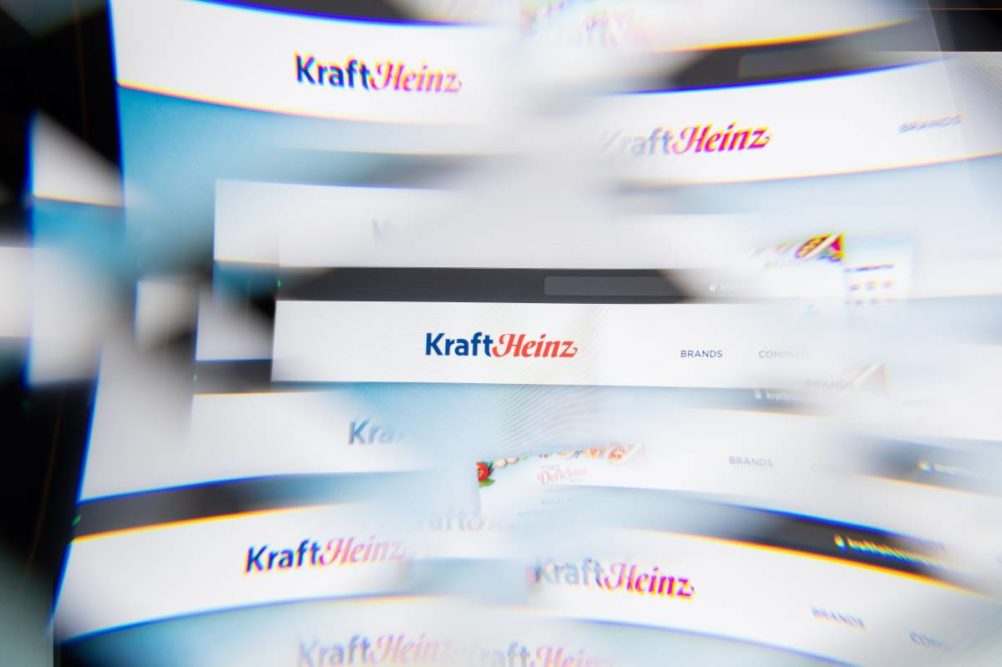PITTSBURGH — The Kraft Heinz Co. made progress in overcoming some challenges in its supply chain during the third quarter of fiscal 2022 but remained constrained by the availability of some ingredients and packaging materials.
“Approximately 80% of the supply chain challenges we face today are due to upstream supply disruptions on ingredients and packaging materials,” said Miguel Patricio, chief executive officer, in prepared remarks released in conjunction with the company’s financial results on Oct. 26. “Our market share performance is closely linked to our service levels and on-shelf availability. In categories that are not constrained, like condiments and sandwich cheese, we continue to grow and gain market share. The same applies to businesses where we faced supply constraints that have been resolved, like Lunchables and kids single-serve beverages, where we saw significant share gains in the third quarter.
“However, it is no coincidence that our two biggest drivers of share losses, powdered beverages and frozen snacks and appetizers, are both supply constrained. And in these two categories, we are seeing on-shelf availability significantly below the category average.”
The availability of CO2 also has been a problem for Kraft Heinz. The company made investments in recapturing and recycling CO2 to extend its existing supply.
“We are constantly looking to optimize our processes to drive efficiencies,” Patricio said. “I am especially excited about the investments we are making in factory automation and digitalization. Not only will this increase overall production levels for us, but it should lower variable costs and give us the ability to flex our supply chain with consumer demand.”
Carlos Abrams-Rivera, president of North America for Kraft Heinz, said the company is using data analytics to better manage inventory.
“We actually are ingesting data directly from our customers in a way that allows us to better deploy our inventory to reduce out of stocks,” he said during an Oct. 26 call with securities analysts. “We started that with a pilot with one particular retailer and that allows us to actually reduce the amount of inventory by 40% — the out-of-stocks in their stores, by 40% in a period of about eight weeks.
“We now have expanded that program and now we’re ingesting more data from different customers that allows you to then make sure that we are then putting the right inventory in the right stores and gain the right signals into our production so that we can maximize the availability capacity that we have in our plants.”
Kraft Heinz net income for the quarter ended Sept. 24 was $435 million, equal to 35¢ per share on the common stock, and down from $733 million, or 60¢ per share, during the third quarter of fiscal 2021.
Quarterly sales rose to $6.5 billion from $6.3 billion the year before.
Items affecting earnings included a non-cash impairment charge of $220 million and unfavorable changes in other expenses, according to the company. Kraft Heinz benefited from a payroll tax credit and insurance benefit payments that amounted to approximately $30 million.
Organic net sales rose 11% to $6.6 billion during the quarter, with price increases contributing 15% while volume/mix fell approximately 4%.
Guidance offered by management included a high single-digit fiscal organic net sales increase for the fiscal year. Kraft Heinz also raised the lower end of its 2022 adjusted EBITDA range to $5.9 billion to $6 billion, up from $5.8 billion to $6 billion.
“Price realizations and gross efficiencies are expected to mitigate the approximate 20% inflation we anticipate for the full year,” said Andre Maciel, global chief financial officer.


